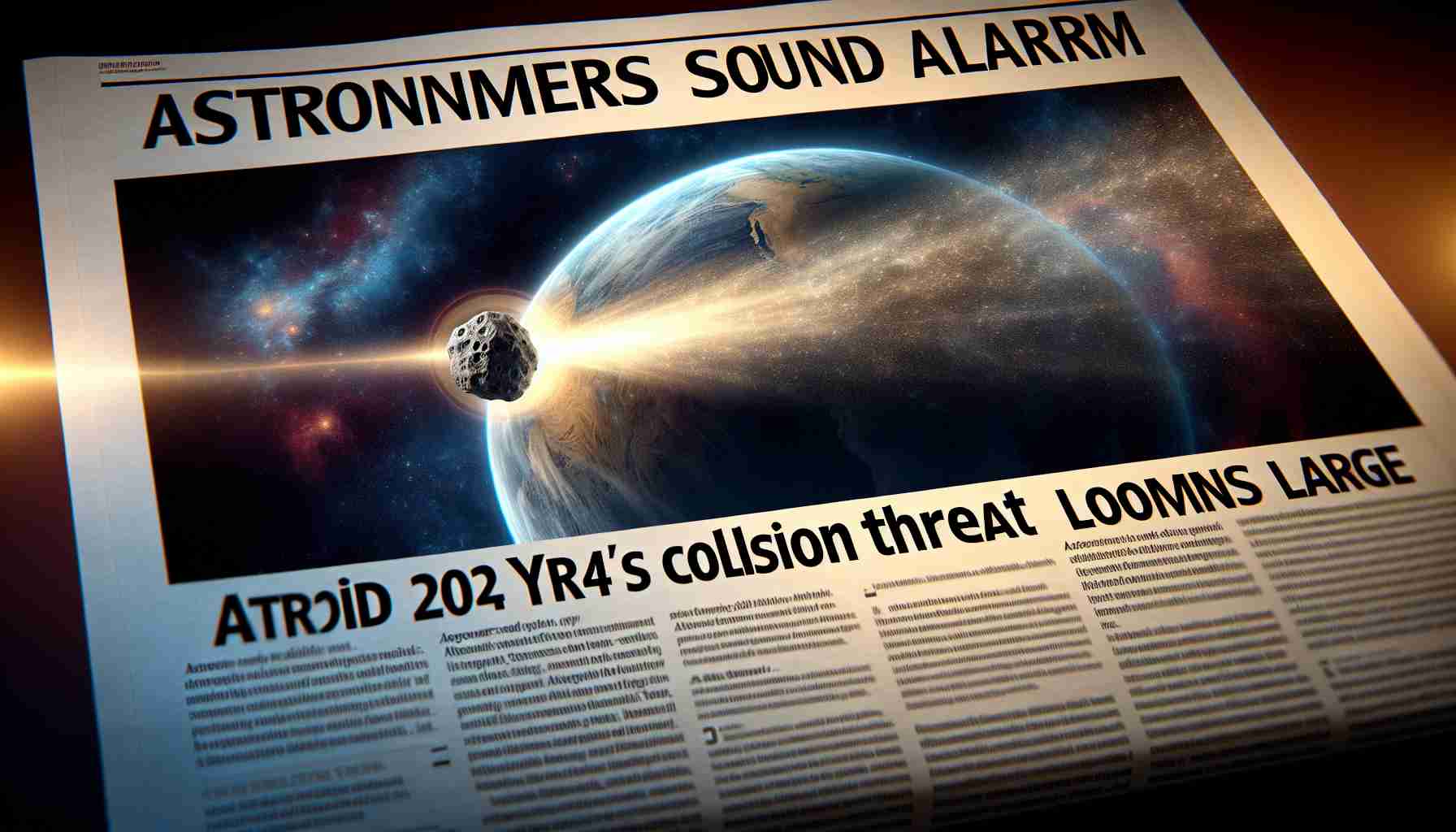- Asteroid 2024 YR4 has a 1.3% collision chance with Earth, potentially causing massive destruction.
- Ranging from 40 to 100 meters, it travels at 13.5 kilometers per second, with energy levels surpassing the 2013 Chelyabinsk event spike.
- This asteroid is currently rated Level 3 on the Torino Impact Hazard Scale, signaling a need for global preparedness.
- Efforts by astronomers like Daniel Bamberger are crucial in mapping impact zones and aiding emergency planning.
- NASA’s work on refining asteroid trajectory models is vital to update and inform the public about this threat.
- The situation highlights the importance of advancing planetary defense strategies and technologies.
- Innovative missions, such as NASA’s DART, demonstrate progress in altering asteroid paths.
- Increased investments in space surveillance emphasize the need for international collaboration.
The universe has thrown a dramatic curveball at Earth: Asteroid 2024 YR4. With a 1.3% chance of collision—equating to a 1 in 77 probability—this formidable “city killer” demands global attention. Spanning between 40 to 100 meters and zooming at an unbelievable 13.5 kilometers per second, 2024 YR4 could deliver a powerful blow, with energy levels 15-20 times that of the cataclysmic 2013 Chelyabinsk event, which wreaked havoc upon impact.
Currently rated Level 3 on the Torino Impact Hazard Scale, this cosmic behemoth calls for immediate action and preparedness. The Earth braces itself as experts like German astronomer Daniel Bamberger meticulously map potential impact areas, offering insights and aiding preparation in the face of potential devastation.
NASA plays a pivotal role, refining trajectory models and keeping a vigilant eye on this looming threat to update the world. This celestial visitor underscores the dire necessity to revolutionize planetary defense strategies. As science and technology intertwine, our readiness against such interstellar dangers reflects humanity’s collective determination to safeguard future generations.
The pressing question remains: Are we equipped to deflect this cosmic danger? As global interest spikes, innovative defense measures, like NASA’s DART mission, showcase new frontiers in asteroid trajectory alteration and reveal promising advancements. Meanwhile, investments in space industries surge, emphasizing the growing need for collaboration in space surveillance and defense technologies.
Stay alert, as our planet’s watchful gaze turns skyward. While the looming threat serves as a reality check, the pursuit of knowledge and preparation paves the path toward securing Earth’s cosmic future.
The Asteroid Threat: Are We Ready to Take on 2024 YR4?
What Are the Current Innovations in Deflecting Asteroids Like 2024 YR4?
In the realm of planetary defense, significant strides have been made with missions such as NASA’s DART (Double Asteroid Redirection Test). DART’s objective is to slightly alter an asteroid’s path by intentionally crashing into it, demonstrating proof of concept for kinetic impactor technology. This innovation is a cornerstone for future strategies aimed at deflecting potentially hazardous asteroids like 2024 YR4 and showcases our capacity to employ technology actively for earth’s defense.
For more information about ongoing NASA projects and planetary defense initiatives, visit NASA.
How Are Experts Calculating the Impact Zones and Preparing for Potential Collisions?
Astronomers like Daniel Bamberger are at the forefront of mapping potential impact zones for asteroids like 2024 YR4. By analyzing trajectory data, rotational dynamics, and size estimates using predictive models, experts can pinpoint areas most at risk. This data is crucial for disaster preparedness, allowing for the development of contingency plans and informing local authorities about necessary preventive measures.
For comprehensive insights and updates on asteroid observation, check out European Space Agency.
What Market Trends Are Emerging in Space Surveillance and Defense Technologies?
The approach of asteroids such as 2024 YR4 has sparked increased interest and investment in space surveillance and defense technologies. The global market for space situational awareness is expected to grow substantially over the next decade, driven by both governmental and private sector investments aimed at enhancing detection and mitigation capabilities. Emerging trends include the integration of artificial intelligence in monitoring systems, miniaturization of space hardware, and enhanced international collaboration to provide a collective response to extraterrestrial threats.
Learn more about the space industry’s future and investment opportunities at SpaceNews.
Preparing for the Unthinkable: Earth’s Readiness for Asteroid Impacts
While we possess growing technological means to handle potential asteroid threats, the case of 2024 YR4 acts as a wake-up call, reminding us of the importance of continued vigilance and advancements in planetary defense. As the world watches the skies, the fusion of innovation, collaboration, and preparedness settings promise a proactive approach to preserving our planet’s safety against celestial challenges.











